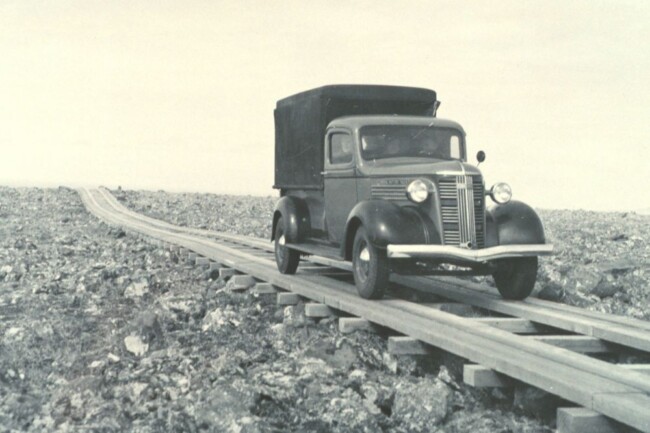Any Hudson County local is familiar with Paterson Plank Road, or even Hackensack Plank Road, but few realize these thoroughfares were a part of a national craze sweeping the United States known as the “Plank Road Boom.” A “plank road” is exactly what it sounds like: a roadway constructed of wooden planks. From 1844 through much of the 1850s, over 3,500 miles of plank roads were built around New York and Hudson County, enough to stretch from Hoboken to San Francisco. An additional 10,000 miles of plank roads were laid around the United States at this time. Read on to learn more about the history of the “Plank Road Boom” in New Jersey.
How the Plank Road Traveled from Russia to Hudson County
Plank roads were popular in Russia and arrived in North America via timber-laden Canada. The first Governor General of Canada, Charles Poulett Thomson, hailed from a distinguished family with strong trading ties to Russia and implemented the technology throughout Canada to great effect. Quick to construct, easy to repair, and cost much less than stone roads, a plank road could last up to eight years.
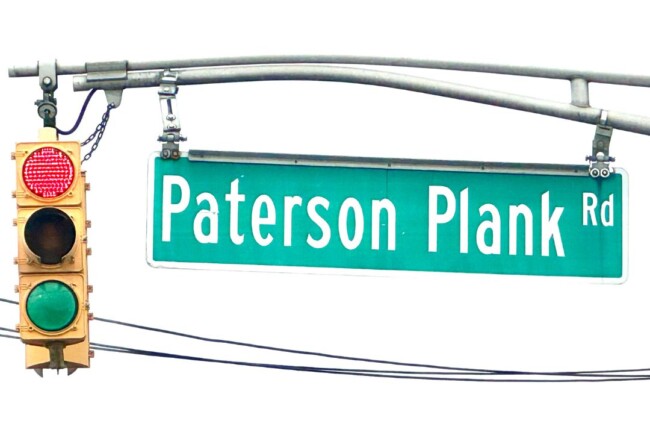
Read More: How Hoboken’s Lackawanna Train Station Changed Transportation Around the World
Soon this style of roadway caught on in America when Syracuse engineer and New York State Senator George Geddes lobbied for their proliferation throughout the East Coast. The tremendously popular — and profitable — Syracuse-Central Square road was the first plank road laid in America.
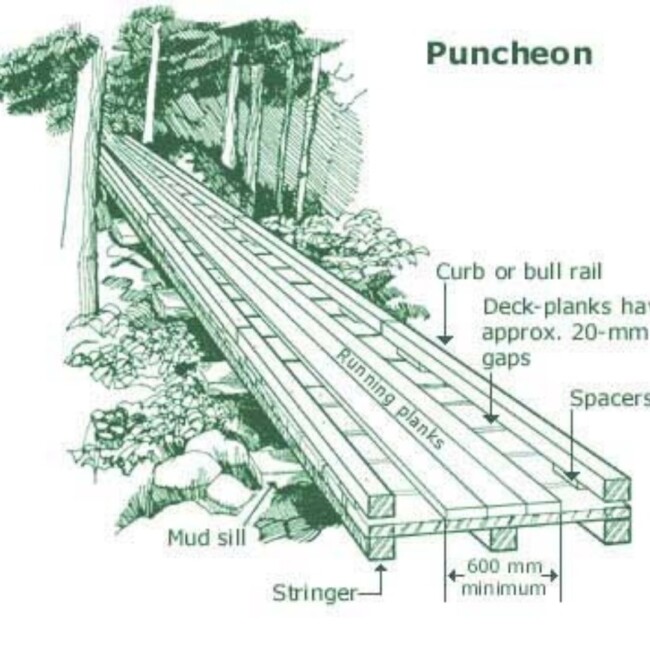
Photo Credit: Public Domain
New Jersey’s three plank roads, the Hackensack, Paterson, and Newark, were the first Garden State Parkways of their day — so much so, that two of those roads (Paterson Plank Road and Hackensack Plank Road) still retain their original names. Garfield Avenue, spanning much of Jersey City’s length from north to south, was first known as “Old Bergen Point Plank Road.”
Why Need a Plank Road?
Today, we take the ubiquity of navigable roads for granted, but in the mid-19th century, canals and railways were the most popular transport for goods.
A Camden Journal article published on October 25th, 1853 explained the need for Plank Roads:
“Railroads are convenient and indispensable, but for affording facilities for our farmers, and opening a safe, easy, and sufficiently expeditious channel of conveyance for their produce, in sections where there are no railroads, or where the distance to them is too great for the ordinary modes of hauling, the Plank Road is the great desideratum.”
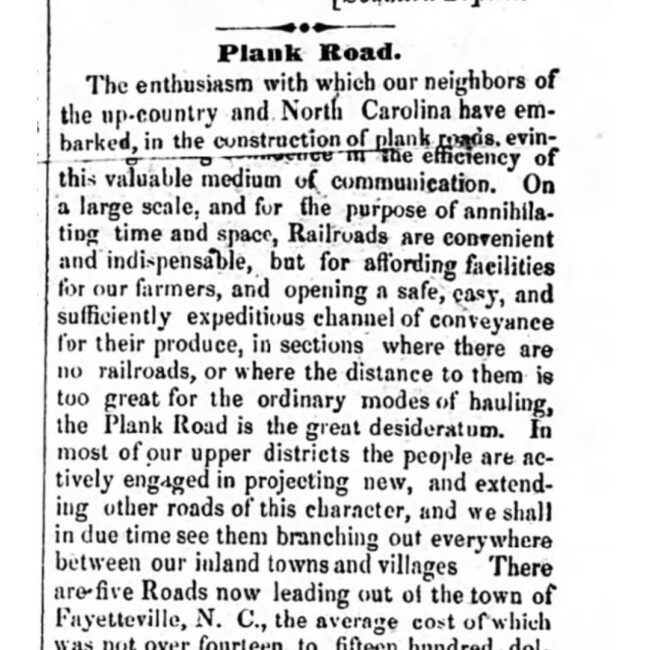
Photo Credit: Camden Journal
Profit: A Road Paved in Wood Gold
In addition to benefiting locals for useful commerce and travel, the plank road was immensely profitable for investors.
According to George Geddes’ Observations Upon Plank Roads (1850), plank roads could be laid at a fraction of the construction cost of stone or gravel roads, and could offer a 20% return on investment. Plank roads could last for eight years unless they were being heavily trafficked, in which case investors could collect more revenue in tolls, which then offered the potential to build more roads and make a further profit.
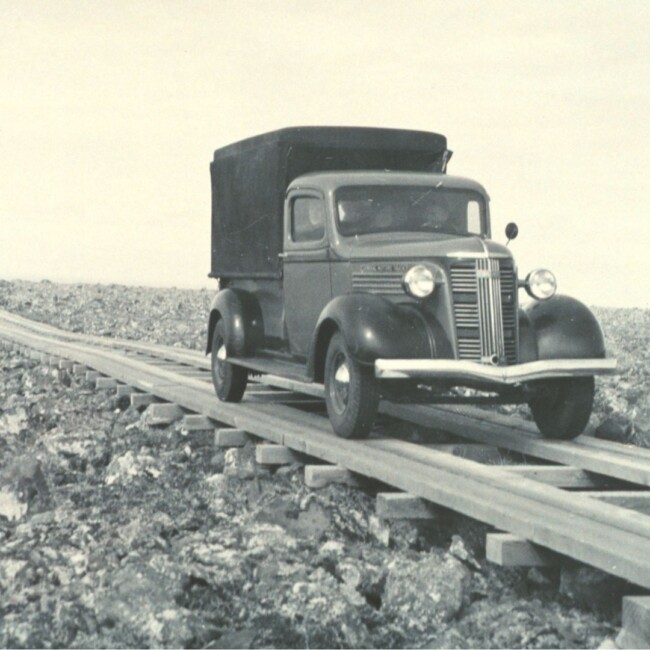
Photo Credit: Public Domain
See More: The History Behind Essex County Town Names
Soon, companies sprang up to capitalize on the building boom. A New York Tribune advertisement published on December 26th, 1851, sought: “Plank Road Contractors…for building a DOUBLE TRACK PLANK ROAD from Keyport to Freehold, Monmouth Co., N.J., a distance of 13 1/2 miles.”
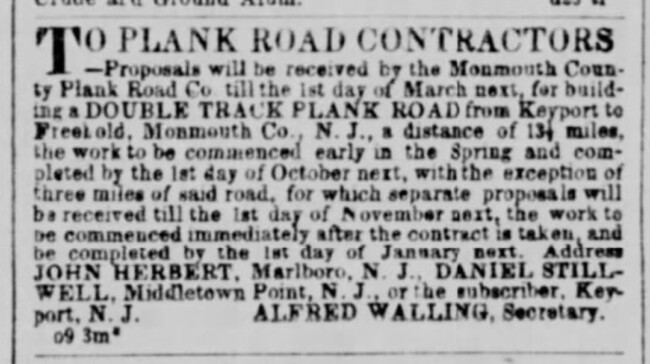
Photo Credit: New York Tribune
In Rebecca Solnit’s 2001 book Wanderlust, she recognizes: “Roads are a record of those who have gone before and to follow them is to follow people who are no longer there.” In such a way, when traveling Paterson Plank Road we traverse the same route that so many of our forebears have traveled in finding our way home.

